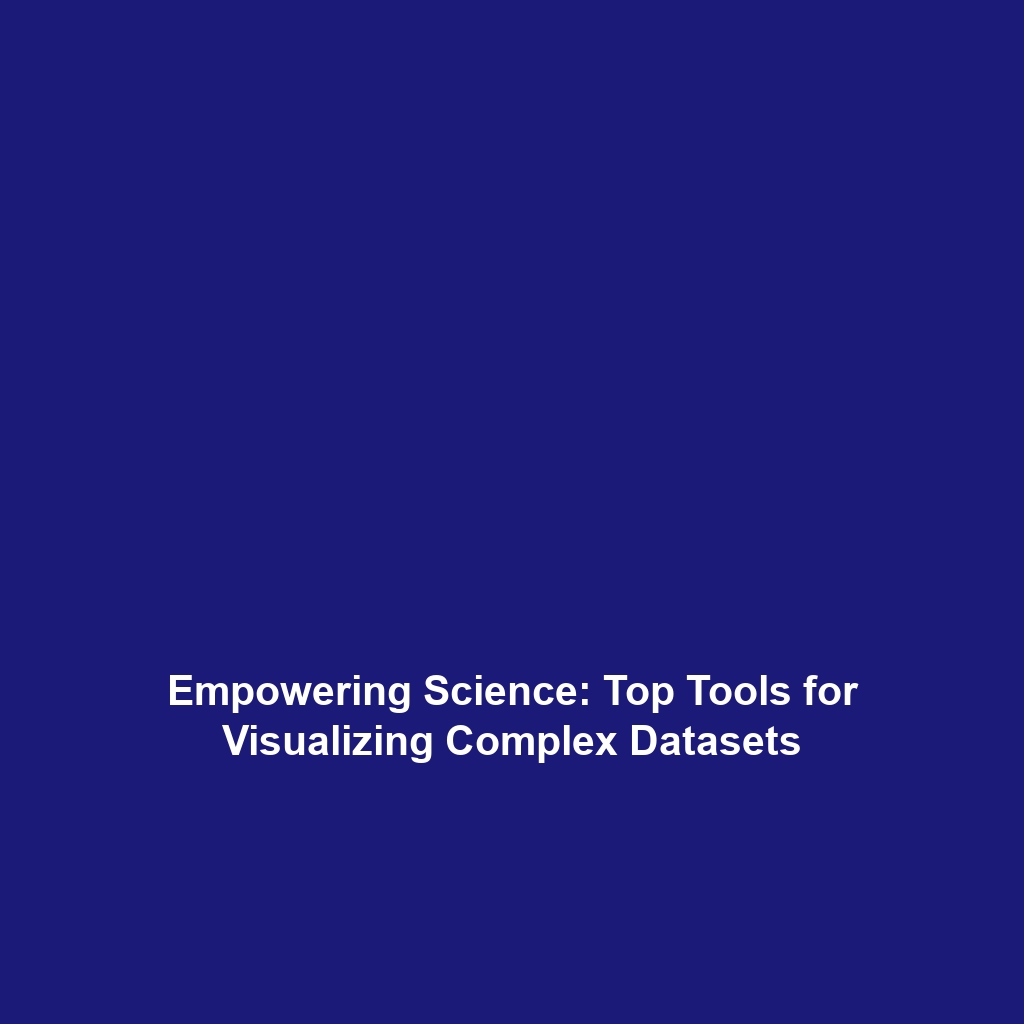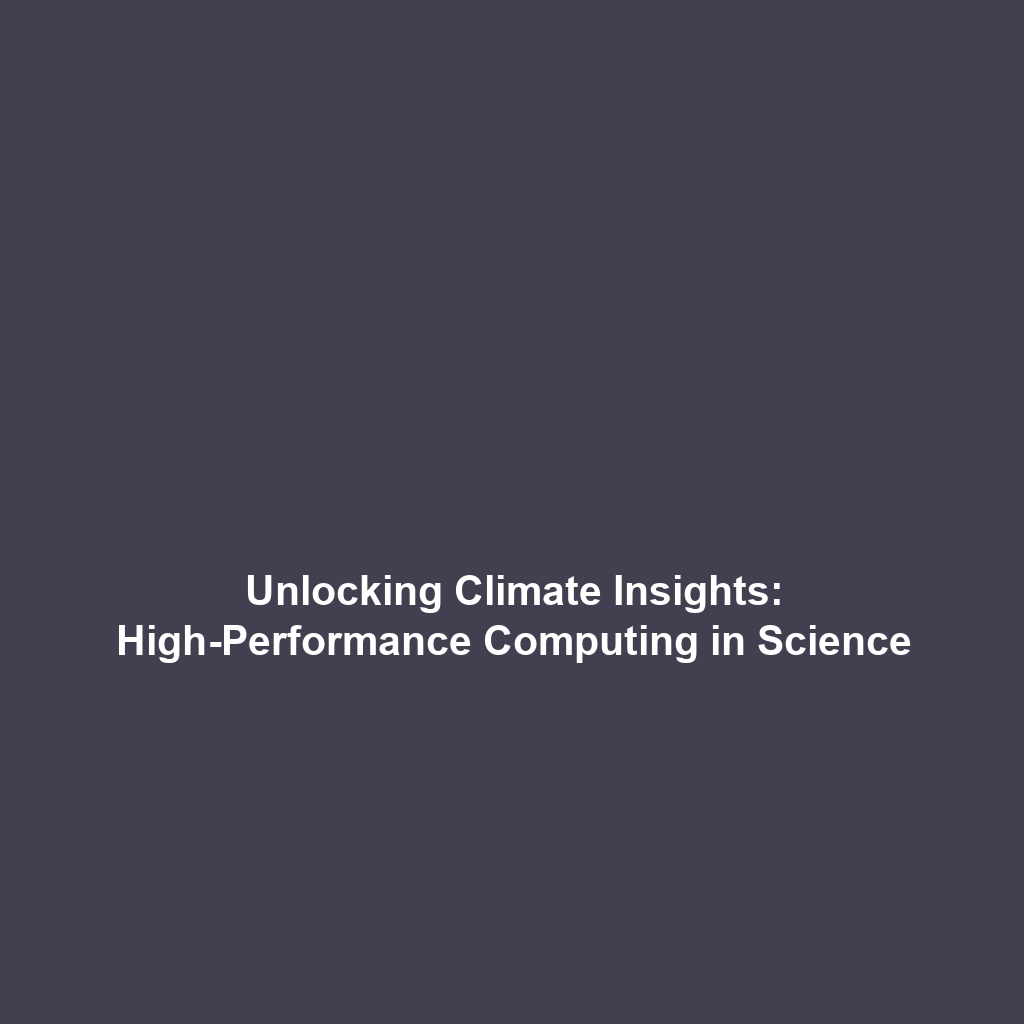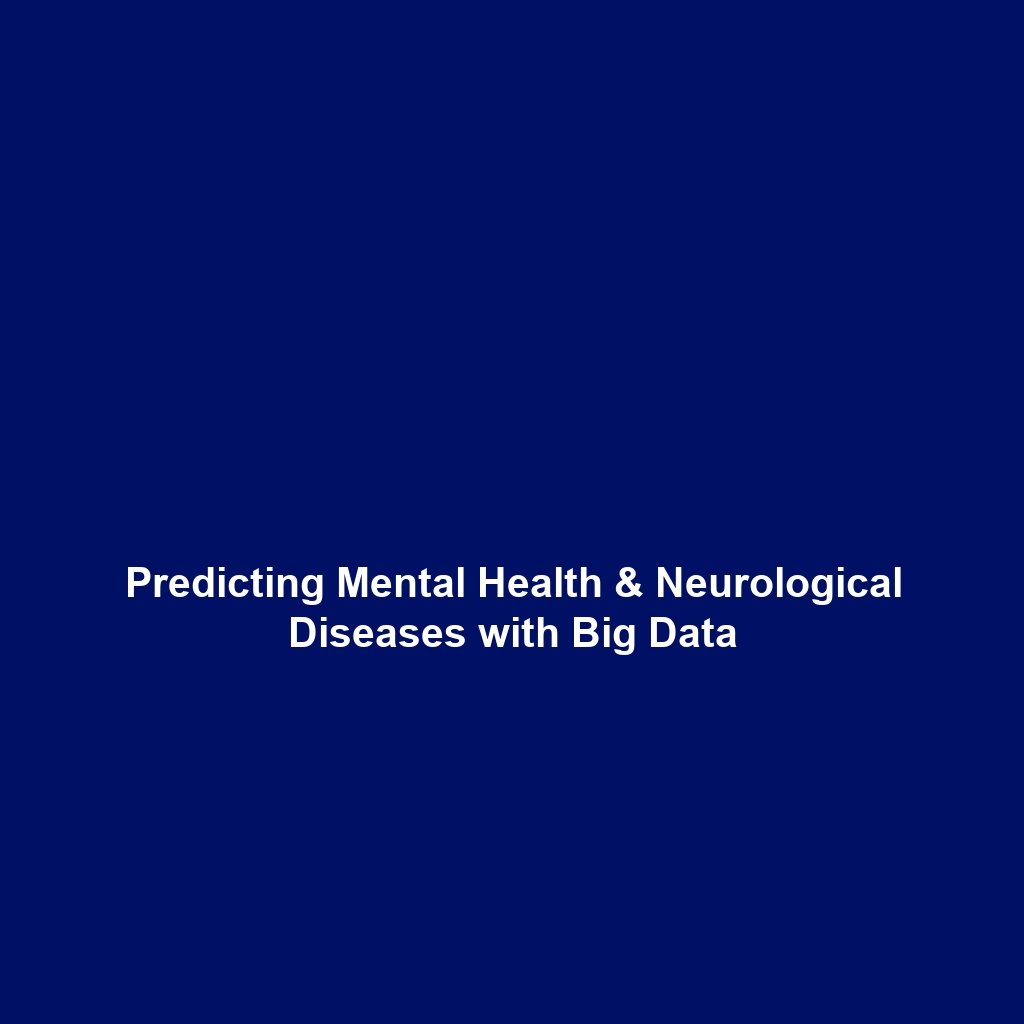Tools for Visualizing Complex Datasets to Aid in Scientific Interpretation and Communication
Introduction
In the era of Big Data in Science, the ability to interpret and communicate complex datasets is crucial. Tools for visualizing these datasets not only enhance our understanding of intricate scientific phenomena but also facilitate effective communication of findings. By employing visualization techniques, researchers can uncover patterns and insights that may remain obscured in raw data. This article delves into the significance of these visualization tools and how they contribute to scientific discovery and communication.
Key Concepts
Understanding Visualization Tools
Visualization tools serve as a bridge between complex data and human cognition. They utilize graphical representations to simplify information, enabling scientists to derive meaningful conclusions from vast datasets. Key concepts include:
- Data Representation: Techniques to visually present data such as graphs, charts, and maps.
- Interactivity: Modern tools allow users to interact with data to explore different variables.
- Complexity Reduction: Tools aid in distilling complex datasets into comprehensible visuals.
These principles are essential as they fall under the broad umbrella of Big Data in Science, emphasizing the need for clarity in presenting complicated information.
Applications and Real-World Uses
Tools for visualizing complex datasets find application across various scientific fields, demonstrating their importance in Big Data in Science. Here are notable examples:
- Healthcare: Visualization tools are utilized to track the spread of diseases through epidemiological data, allowing for swift public health responses.
- Environmental Science: Scientists use GIS (Geographic Information System) tools to analyze and visualize climate change data, informing policy decisions.
- Bioinformatics: Tools that visualize genomic data help identify genetic patterns and anomalies, critical in personalized medicine.
These applications show how visualization tools are not just technical aids but essential components in the interpretation and communication of scientific knowledge.
Current Challenges
Despite the advantages, several challenges hinder the effective use of visualization tools for complex datasets:
- Data Overload: The sheer volume of data can overwhelm users, making it difficult to extract meaningful insights.
- Tool Proficiency: A lack of familiarity with advanced visualization tools may limit their usage and effectiveness among researchers.
- Bias in Visualization: Poorly designed visual representations can mislead interpretation, leading to erroneous conclusions.
Addressing these challenges is essential in enhancing the impact of visualization tools within Big Data in Science.
Future Research and Innovations
The future of Tools for visualizing complex datasets looks promising, with several innovations on the horizon:
- AI-Driven Visualization: Artificial intelligence is beginning to transform how data is visualized, offering predictive insights based on patterns.
- Augmented Reality: Next-gen tools that use AR will enable immersive data exploration, changing how scientists interact with datasets.
- Collaborative Platforms: Future tools will likely focus on enhancing collaborative efforts among researchers, allowing for shared visualization and interpretation.
These innovations will undoubtedly shape the future landscape of Big Data in Science, expanding our capabilities in data interpretation.
Conclusion
Tools for visualizing complex datasets play a vital role in enhancing scientific interpretation and communication. Their ability to distill vast amounts of data into understandable formats is indispensable in the age of Big Data in Science. As we advance, it is crucial for researchers to adopt and refine these tools to maximize their effectiveness. For continued reading on related topics, explore our articles on data visualization benefits and the challenges in Big Data analytics.


